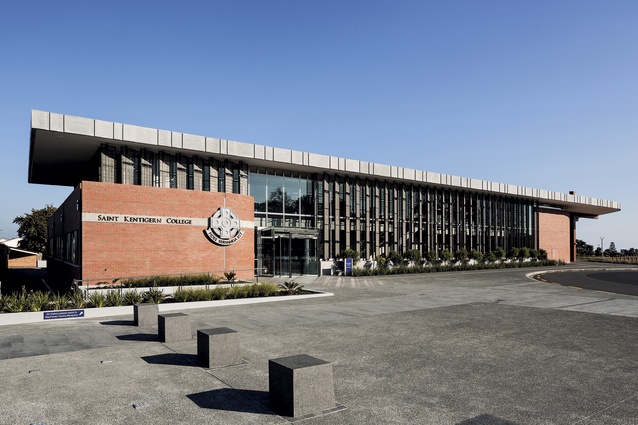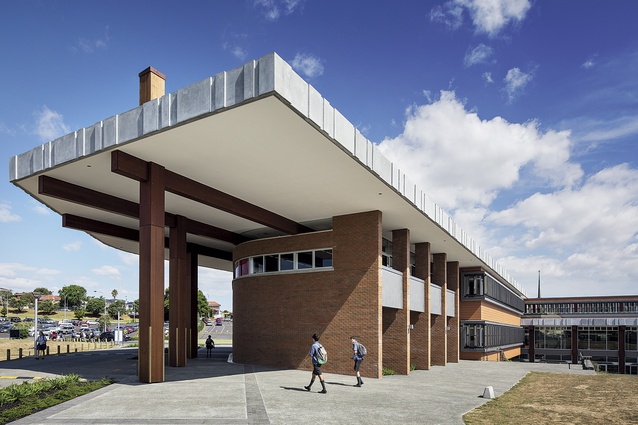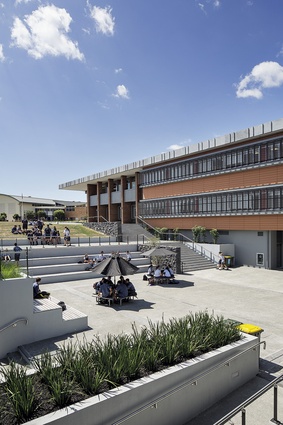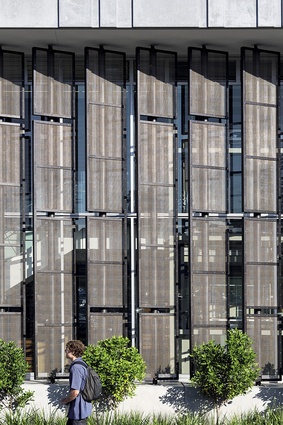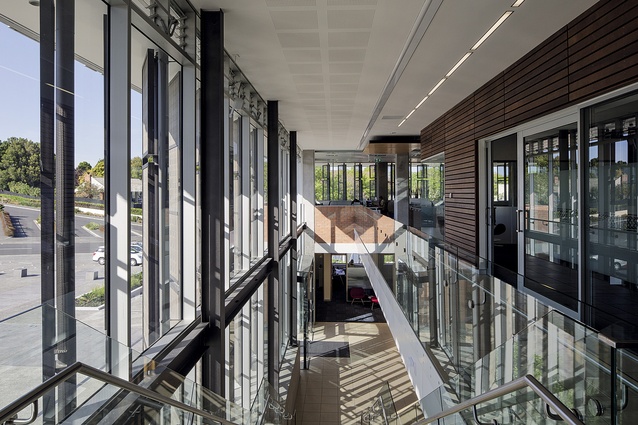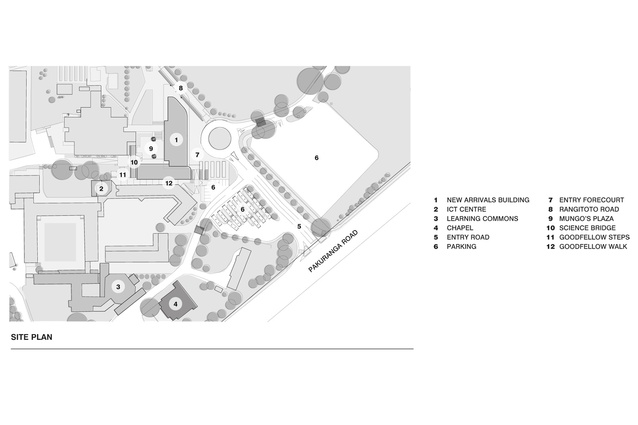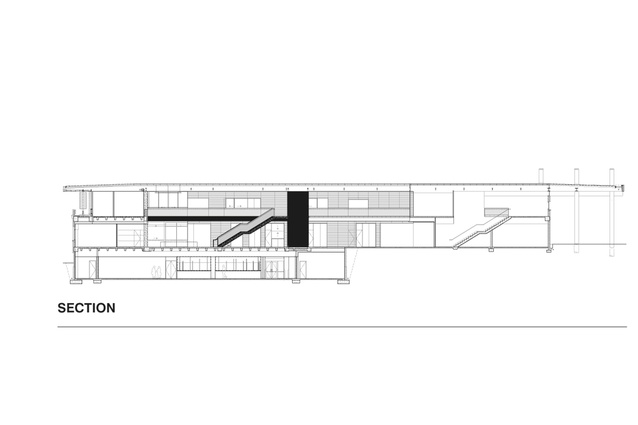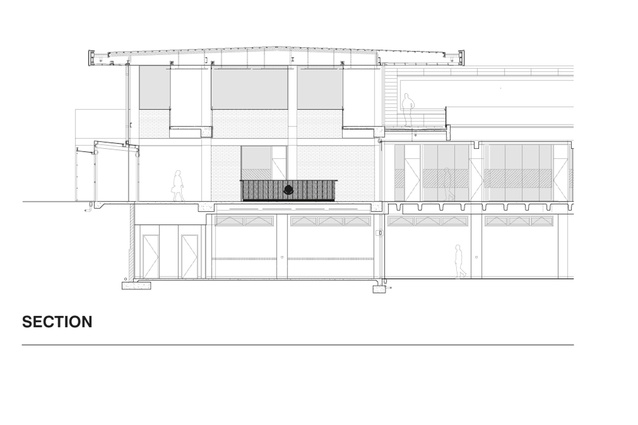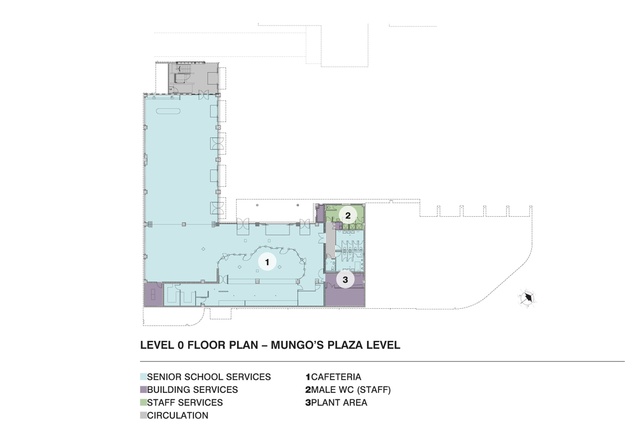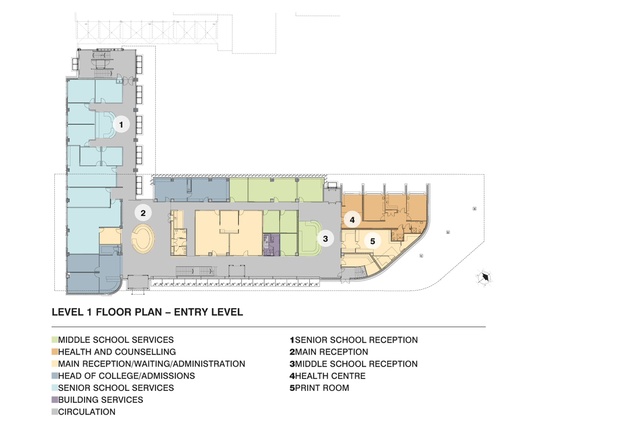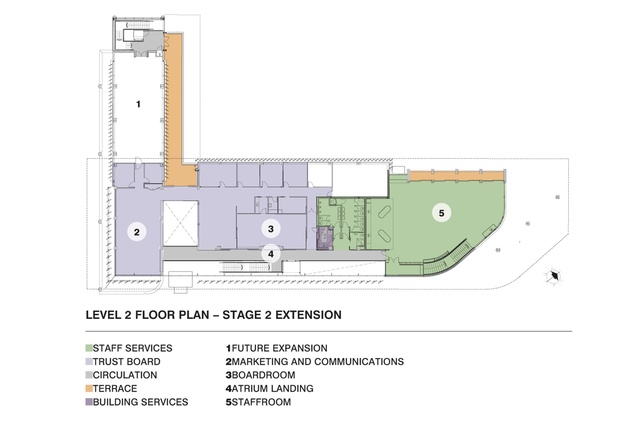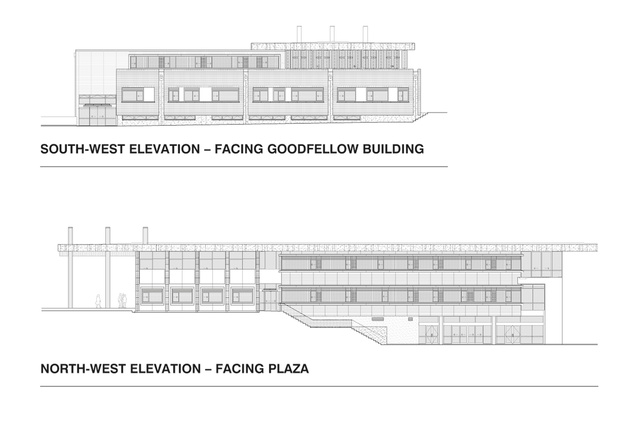MacFarlan Centre, Saint Kentigern College
Fondly referred to as Mungo by Glaswegian locals, Saint Kentigern is the patron saint and founder of their city. Symbols of his four religious miracles – a bird, a tree, a bell and a fish – adorn the city’s coat of arms. In designing the MacFarlan Centre for the 60th jubilee of the Pakuranga school that bears this saint’s name, RTA Studio offers a hint of the Highlands without going the full fling. Long metal sunscreens march in formation down the front of the building like so many shouldered sashes, patterning the elevation with plaid. As well as making steel, Glasgow is famous for its textile industry, a heritage applied lightly to this building in the way that the grids of the screens intersect to create a moiré effect. Anchoring the pleats is a celtic cross, bearing the school’s name and motto, which is fastened to the Monier brick wall like a clan-crested kilt pin.
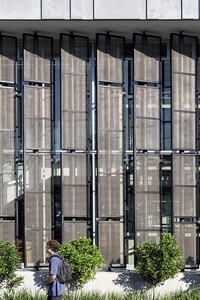
Staff offices are sited on the upper level with a north-western outlook and have access from the gallery and stairs to the south. Built on what was originally 100 acres of farmland sloping down from Pakuranga Road to the Tamaki River in the north-west, and facing towards Rangitoto and the Hauraki Gulf, the school basks in sunshine and enjoys an uninterrupted view of the sheltered Tamaki estuary and the sparkling Waitemata. Rather than being sealed off from the environment, the building responds to it, with fans silently circulating air, and louvres opening and closing as temperatures fluctuate. Mungo can be invoked by the birds, trees and fish which remain in the surrounding landscape and the grounds feature his fourth symbol, a bronze bell, like the one that Saint Kentigern brought from Rome to Scotland in 614AD.
Paying homage to the first permanent headmaster, the building is named the MacFarlan Centre. In 1952, the Reverend Dr Adam Maitland Lang MacFarlan, M.C., M.A., D.D. arrived in the land of milk and honey from Glasgow (which still had sugar rationing in place until 1953) answering the call for a headmaster for a new Presbyterian college for boys. Distinguished service in the Royal Scots Fusiliers, scholarship and a commitment to the kirk won him the position over the 84 other applicants. Architectural planning may not have been his forte but MacFarlan knew how to build foundations of a different sort. A Classics scholar, he gave the school its Latin motto: Fides Servanda Est – the faith must be kept.
Arriving to find a prefab marooned in a paddock of mud over 15 kilometres from town, MacFarlan visualised a school of great stature on the site. With wife Betty at his side, he took over from temporary headmaster Bruce Massey and set to work. By 9.00am on 3 February 1953, he was ringing the bell to welcome the 87 pupils. Remaining as principal for the next three decades, (he was awarded an OBE on retirement in August 1983), he grew the school to 700 enrolments and added many new buildings including the Chapel of Saint Kentigern in 1972. Now, Corran and Saint Kentigern Trust Boards have merged and administer four schools on three campuses.
How to integrate all this disparate development was the challenge for RTA associate and project architect Ben Dallimore. In plan, the design is like an anchor, its length hooking into the site to provide management offices and a luxurious staffroom on the upper level, with a sick bay, printing facilities, administration and reception below. Access for the school’s daily inhabitants, staff and students, is concentrated at the eastern end with a middle school reception desk fronting the flow. The point of entry to this area is from the grounds to the north, while parents and the rest of the school’s community arrive through the public entry off the south car park. The building is future-proofed so that a 10th of the internal spaces are currently undifferentiated to allow for growth.
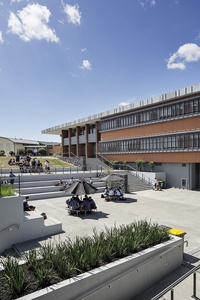
RTA Studio’s brief was to provide a hub and to tidy up the landscaping outside to create assembly points and places for outdoor theatre. The architects have responded with a multifunctional administration building that acts as a monument to mark the 60 years of the school’s existence, adding heft to history without being overly monumental. Clad in the red brick, synonymous with the civic universities of England that sought to differentiate themselves from their medieval Oxbridge counterparts, the Centre acknowledges the weighty inheritance of 20th-century collegiate architecture from the 1950s when the school was founded. But in its conceptualisation and its engineering, the structure is committed to the 21st century. Transparency is now the catchword in governance and decision-making. A trinity of massive I beams that are exposed at the eastern terminus symbolises the staff, students and public that the school serves. These Tau crosses appear to lift the roof up in a show of architectural bravura as if to indicate that there is plenty of air and fresh ideas in circulation within, and invite us to look within.

